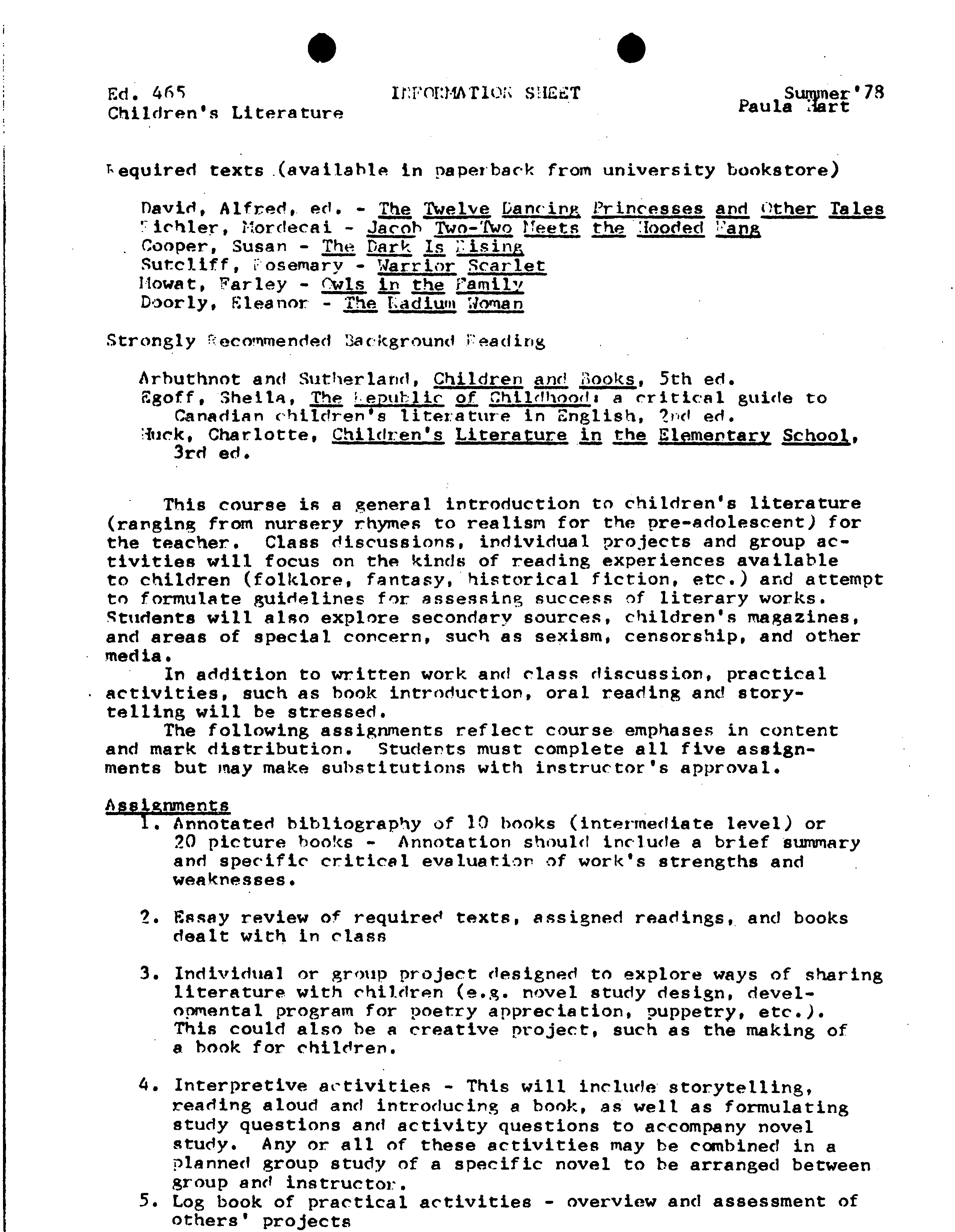.
?
.
Ed. 46
Children's Literature
Irrnr:MTlo:
sICT
Summer' 78
Paula lart
required texts (available in paperback from university bookstore)
David, Alfred, ed. - The Twelve anc'ing
iehler, iordecai - Jacob Two-Two t
eets
Cooper, Susan - The Dark Is rising
Sutcltff, osemary - warrior Scarlet
Ilowat, Farley - owls in the family
Doorly, Eleanor -
?
e tadium 64oman
Strongly ecomrnended 3a ckground reading
Princesses and Other Tales
the ioodecl "an
Arbuthnot and Sutherland, Children and ilooks, 5th ed.
Egoff, Sheit, ?
epuh1ic of Childhoods a critical
guide to
Canadian children's literature in English,
'Fd
ed.
ick, Charlotte, Children's Literature in the Elementar
y
School,
3rd ed.
• This course is a general introduction to children's literature
(ranging from nursery rhymes to realism for the pre-adolescent) for
the teacher. Class discussions, individual projects and group ac-
tivities will focus on the kinds of reading experiences available
to children (folklore, fantasy,historical fiction, etc.)
and
attempt
to formulate guidelines for assessing success of literary works.
Students will also explore secondary sources, children's
magazines,
and areas of special concern, such as sexism, censorship, and other
media.
• ?
In addition to written work and class discussion, practical ?
activities, such as book introduction, oral reading and story-
telling will be stressed.
The following assignments reflect course emphases in content
and mark distribution. Students must complete all five assign-
ments but may make substitutions
with instructor's approval.
Agaignments
1. Annotated bibliography of 10 books
(intermediate
level)
or
20 picture hooks -
Annotation should include
a brief summary
and specific critical evaluation
of
work's strengths and
weaknesses.
2 •
Essay review of required texts, assigned readings, and books
dealt
with in class
3.
Individual or group project designed
to
explore ways of sharing
literature with children (e.g. novel study design, devel-
o p
mental program for poetry appreciation, puppetry, etc.).
This could
also he a creative project, such as the making of
a hook for children.
4.
Interpretive activities - This will include storytelling,
reading aloud and introducing a book, as welt as formulating
study questions and activity questions to accompany novel
study. Any or all of these activities may be combined in a
planned group study of a specific novel to he arranged between
group and instructor.
5. Log book of practical activities - overview and assessment of
Others' projects

